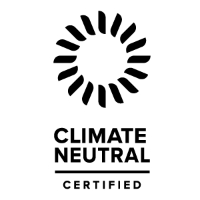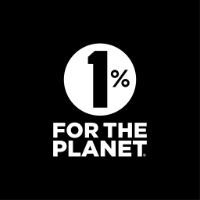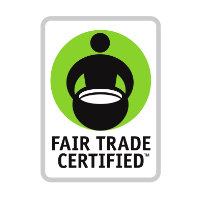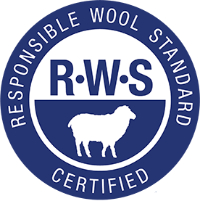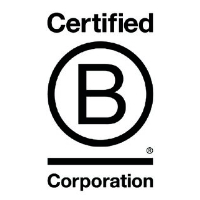Hiking gear and clothing tend to be pricey. Their construction is often complex, combining technical fabrics with innovative design features that help to make our time on the trail as easy and comfortable as possible. Getting this right comes at a price, and rightfully so. But the cost of a product isn’t limited to the financial commitment made by the consumer. What a product costs in terms of environmental and social impact is also a huge consideration that we believe consumers should hold with equal importance as the financial investment we make.
So, when we’re ready to invest in something new it’s super important that we get it right.
Responsibly made hiking gear and clothing is out there. It just requires consumers to take a little more time and thought when choosing what to buy. But it also helps when brands take steps to be as transparent as possible when labelling and marketing their products.
Because transparency isn’t as commonplace as it should be, we’ve put together a list of hiking clothing and gear that we view as “responsibly made”. Hopefully this will help put you one step closer to making responsible consumer decisions that also meet your personal needs.
- What is responsibly made hiking gear and clothing?
- Do you really need to buy a new item?
- Responsibly made hiking clothing and footwear
- Responsibly made hiking gear
Disclaimer: We use affiliate links and may receive a small commission on purchases.
What is responsibly made hiking gear and clothing?
The term “responsibly made” is, in itself, a little bit ambiguous and non-specific. But the term also doesn’t claim to be “sustainable” or “eco-friendly” which can be very misleading to consumers. Really, the most sustainable products are the ones we already own!
the most sustainable products are the ones we already own
However, if something is “responsibly made”, it indicates that the brand is doing the best it can to mitigate the impact of the product’s production on the planet and the people who create it. But the statement also acknowledges that the brand almost certainly knows that there’s still more work to do to reduce negative impact.
We like to think that something that is responsibly made is created with people and the planet in mind; that there are processes, policies and practices in place that ensure certain standards are consistently met. And many of these standards will be measured by external third parties who are constantly raising the bar.
Do you really need to buy a new item?
For us, a big part of reducing the impact of a product also includes responsible consumerism. Many brands are working tirelessly to lessen their impact. And we believe that we, as consumers, also need to do our bit. This comes down to choosing products carefully and supporting brands that are doing good stuff. It also requires consumers to seriously consider our needs and ask ourselves some serious questions about those fancy new hiking pants on our wish list.
You can read more about being a responsible consumer in our guide. In the meantime, here are a couple questions to ask yourself about your buying needs, before you delve into our guide to responsibly made gear and clothing for hiking:
- Can you repair your existing gear or are there repair services available?
- Are you able to borrow or rent items for one-off uses or before you’re ready to invest in a new activity?
- Do you already own items that will do a perfectly good job when used in a different scenario? Eg: sportswear performs just fine for most casual hikers
If you’re now ready to invest in something new, the next step is to consider buying it secondhand. There are loads of amazing platforms that facilitate buying excellent quality used gear and clothing. REI Used is once such platform that also offers a trade-in service:
Try REI Used
Responsibly made hiking clothing and footwear
Hopefully you’ve explored repairing, rental, borrowing and buying secondhand items and have no other choice but to buy something new. The below list are items that are examples of hiking clothing and gear that have been made with people and the planet in mind. Choosing these responsible made options is a superb step closer to being a more responsible consumer.
The next step will be to share your findings with all your hiking buddies who are also lost in the forest of consumerism and desperate to do the right thing but don’t know which way to turn.
Put them on the right path and the planet and its people will thank you for it!
REI Co-op Sahara Convertible Pants
 Fabrics and production: 96% recycled nylon, 4% spandex, in the process of transitioning away from the use of PFAS in the DWR coating
Fabrics and production: 96% recycled nylon, 4% spandex, in the process of transitioning away from the use of PFAS in the DWR coating
Properties: UPF protective, stretchy, quick drying, low bulk
What we like: The fact that these long pants convert into shorts means that consumers only need to buy one item instead of two, thus lowering their impact. The pants are good for travel and general outdoor use as well as hiking.
Patagonia Nano Puff Jacket
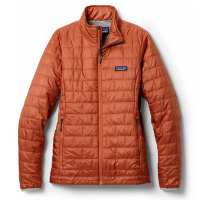 Fabrics and production: 100% recycled polyester ripstop shell and lining with a PFC-free DWR finish, Insulation is 100% post-consumer recycled polyester with P.U.R.E.™ (Produced Using Reduced Emissions) technology
Fabrics and production: 100% recycled polyester ripstop shell and lining with a PFC-free DWR finish, Insulation is 100% post-consumer recycled polyester with P.U.R.E.™ (Produced Using Reduced Emissions) technology
Properties: Warm, windproof, water-resistant, packable, lightweight
What we like: This is one versatile jacket that can be worn as a mid layer in the winter or as a stand alone jacket at warmer times. It’s ideal for multiple activities as well as everyday wear.
Icebreaker Sphere II Long-Sleeve Crewe T-Shirt
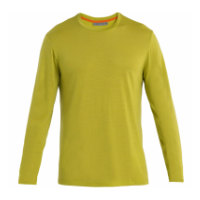 Fabrics and production: 60% TENCEL lyocell, 40% merino wool
Fabrics and production: 60% TENCEL lyocell, 40% merino wool
Properties: Breathable, odor-resistant, moisture wicking, UFP protective
What we like: Merino-based clothing can be worn for days without the need to be washed, thus reducing the use of power and water and the release of chemicals into the water systems when washing. Because of this, they make excellent base layers for everyday wear as well as almost all land-based outdoor activities.
Cotopaxi Cielo Rain Jacket
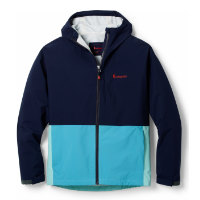 Fabrics and production: 100% recycled polyester, PFC-free DWR
Fabrics and production: 100% recycled polyester, PFC-free DWR
Properties: Waterproof in light-moderate rain
What we like: This is an affordable jacket for everyday hikers and outdoors people in moderate climates. It’s also stylish enough to wear as an everyday jacket, reducing the need for multiple jackets.
REI Co-op XeroDry GTX Pants
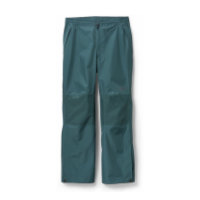 Fabrics and production: 100% recycled polyester face, GORE-TEX PACLITE membrane. Gore-Tex is aiming to eliminate PFCs in 2023
Fabrics and production: 100% recycled polyester face, GORE-TEX PACLITE membrane. Gore-Tex is aiming to eliminate PFCs in 2023
Properties: Waterproof, windproof, breathable, lightweight
What we like: These pants are way more stylish than most waterproof pants. We also like that their design features make them suitable for commuting in the rain by bike. Plus, they are roomy enough to wear with warmer layers underneath for snowshoeing and snowsports.
Icebreaker Flexi Chute
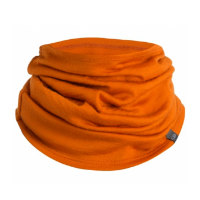 Fabrics and production: 100% merino wool
Fabrics and production: 100% merino wool
Properties: Odor-resistant, temperature regulating, breathable
What we like: As well as not needing to be washed frequently, a neck gaiter like this gets top marks for versatility as it can be worn in so many different ways (hat, headband, face mask etc) and different scenarios (skiing, hiking, biking, climbing etc)
Cotopaxi Teca Fleece Gloves
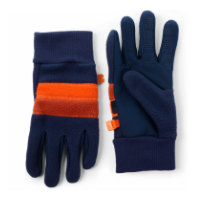 Fabrics and production: 100% recycled polyester fleece made from remnants of other companies’ large production runs.
Fabrics and production: 100% recycled polyester fleece made from remnants of other companies’ large production runs.
Properties: Warm, breathable
What we like: They’re super colourful and cosy, and the nature of their construction using fabric remnants means that the colourways are limited and therefore more unique!
REI Co-op Trailmade Hiking Boots
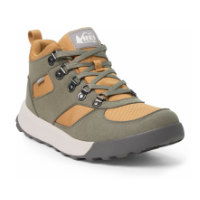 Fabrics and production: 75% recycled polyester waterproof membrane, 80% recycled upper woven ripstop, TerraLoft midsole is at least 20% recycled EVA / 10% algae-based BLOOM foam, TerraGrip tread uses 20% recycled rubber, recycled PET laces
Fabrics and production: 75% recycled polyester waterproof membrane, 80% recycled upper woven ripstop, TerraLoft midsole is at least 20% recycled EVA / 10% algae-based BLOOM foam, TerraGrip tread uses 20% recycled rubber, recycled PET laces
Properties: Waterproof, lightweight, supportive, grippy
What we like: These are hiking boots in disguise! They have all the properties needed for hiking but with a casual aesthetic that means they are highly suited for everyday wear too. That’s one less pair of shoes needed this winter!
Smartwool Performance Hike Full Cushion Crew Socks
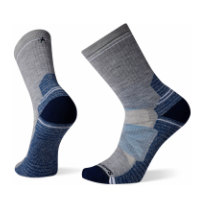 Fabrics and production: 56% merino wool, 31% recycled nylon, 11% nylon, 2% elastane
Fabrics and production: 56% merino wool, 31% recycled nylon, 11% nylon, 2% elastane
Properties: Warmth, comfort, breathability, support
What we like: These are an improved model formerly known as PhD Outdoor Socks. And as well as upping their comfort and fit, Smartwool have also thought about reducing pilling and durability as well as introducing recycled nylon to the range.
Responsibly made hiking gear
Cotopaxi Luzon 24L Pack – Del Dia
 Fabrics and production: Created using remnant fabric originally produced for another purpose to create our repurposed products.
Fabrics and production: Created using remnant fabric originally produced for another purpose to create our repurposed products.
Properties: Lightweight, low profile, good storage options, packable
What we like: This is a great looking pack that is also one of a kind in terms of its colourway. It’s super versatile with loads of storage options and also aesthetically suited to everyday use as well as time on the trail.
Klean Kanteen TKWide Recycled Insulated Water Bottle with Twist Cap
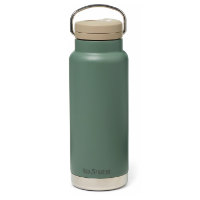 Fabrics and production: 90% post-consumer recycled stainless steel
Fabrics and production: 90% post-consumer recycled stainless steel
Properties: Insulating, easy to clean, BPA-free, dishwasher safe
What we like: This isn’t just a water bottle. Because it’s insulated, it’s ideal to be used as a cup for iced or hot drinks too, eliminating the need for an on-the-go bottle AND a cup. Plus, the cap with a straw makes it great for staying well hydrated on the trail.
The post Responsibly Made Hiking Gear and Clothing appeared first on Cool of the Wild.



